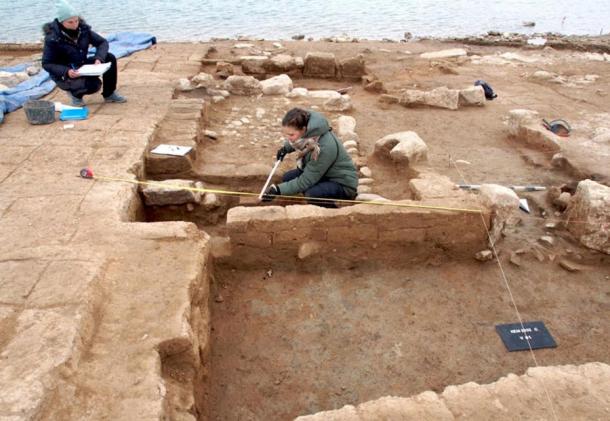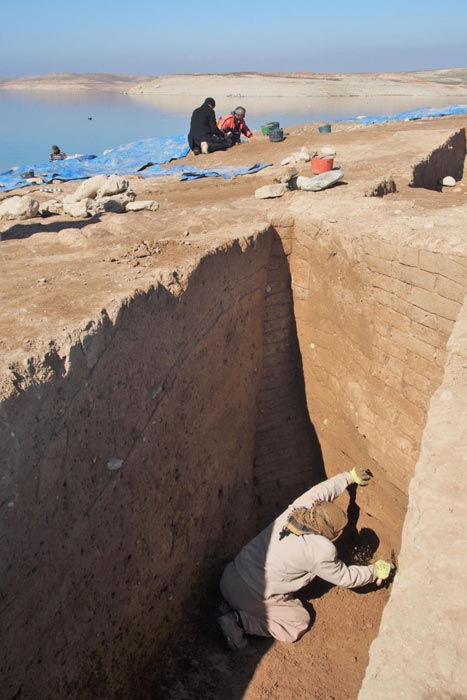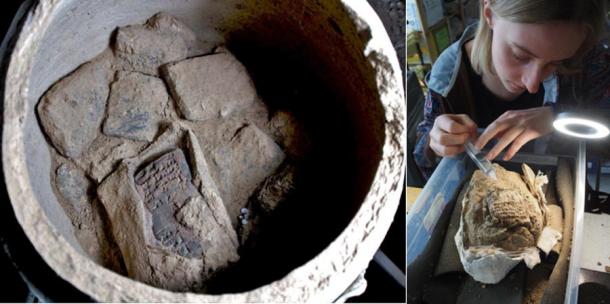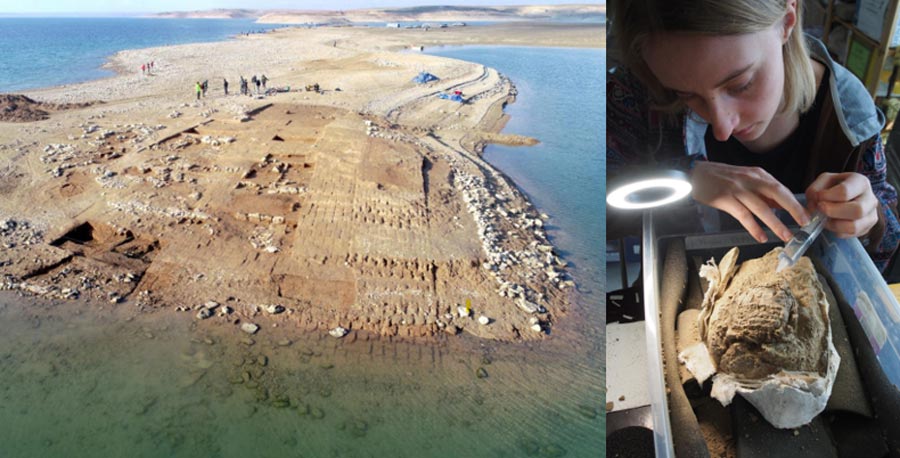Drought in the Tigris River Uncovers Hidden Mittani Empire City
Extreme drought and heat in Iraq has caused the historical Tigris River’s water levels to rapidly drop, revealing a 3400-year-old Mittani empire-era city. Water being diverted.
Climate change, whether due to human impact, or induced by the natural motions of the Earth over a long geological time period, has caused the rise and fall of civilizations and empires. The current climate change, pushing the Earth to increased temperatures is causing even centuries old rivers to dry up. The latest? Extreme drought and heat in Iraq has caused the historical Tigris River’s water levels to rapidly drop, revealing a 3400-year-old Mittani empire-era city. It is possibly the ancient city of Zakhiku, a press release by the University of Tübingen, Germany reports.
Zakhiku’s Rediscovery: The Tussle with Water
Zakhiku, a very important center in the Mittani Empire (c. 1550-1300 BC), was believed to have been destroyed in a massive earthquake. A palace from this vital Mittani urban center had emerged back in 2018-19, after first being spotted in 2010, as per a Smithsonian report. Now, the team of German and Kurdish archaeologists have gotten lucky because of the large amounts of water being drawn from the Mosul reservoir since December, to prevent crops from drying out.
It emerges that the palace was just the tip of the iceberg – a full-fledged Bronze Age city that had submerged decades ago without any archaeological conservation, has reappeared. Located at Kemune in Iraq’s Kurdistan region, this region has been suffering extreme droughts over the past couple of decades, which have only worsened with the passage of time.
- 3,400-Year-Old Palace From a Mysterious Civilization Revealed by Drought
- Cuneiform Clay Tablets Unearthed and Archaeologists Cannot Wait to Decipher Them

The excavated large buildings from the Mittani period are measured and archaeologically documented. (© Universities of Freiburg and Tübingen, KAO)
Owing to water levels being the key for Zakhiku’s rediscovery, time was of the essence. Chairman of the Kurdistan Archaeology Organization, Dr. Hasan Ahmed Qasim, and German archaeologists Professor Dr. Ivana Puljiz from the University of Freiburg and Professor Dr. Peter Pfälzner from the University of Tübingen set out to excavate and document parts of this large, important city before it was resubmerged. A joint rescue excavation was undertaken in January and February in collaboration with the Directorate of Antiquities and Heritage in Duhok (Kurdistan Region of Iraq).
With a team quickly put in place, and funding obtained from the Fritz Thyssen Foundation, the city was soon mapped, rather successfully. In addition to the palace discovered and documented in 2018-19, several other large buildings were also uncovered - a massive fortification with a wall and watch-towers, a monumental, multi-storey storage building (probably for grains, fodder, and weaponry) and an industrial complex. "The huge magazine building is of particular importance because enormous quantities of goods must have been stored in it, probably brought from all over the region," says Dr. Puljiz.

The walls of the Mittani-period storage building are partly preserved and several metres high. (© Universities of Freiburg and Tübingen, KAO)
The walls were well-preserved, often up to several meters high. Despite being underwater for over 4 decades and constructed from sun-dried mud bricks, the team reckons that this preservation occurred due to the earthquake in c.1300 BC, that caused the upper parts of the wall to fall and bury the buildings. "The excavation results show that the site was an important center in the Mittani Empire,” informs Dr. Qasim.
The Mittani Empire: Sidelined to a Footnote
The Mittani Empire is one of the most poorly researched empires from Western Asia. The Western Asian region, particularly the fertile regions formed by the Tigris and the Euphrates River, were where the last climate change caused a huge change in human history. With the Pleistocene (Ice-Age) receding, 12,000 years ago, the conditions were ripe in this region for the Neolithic Revolution to occur. Human beings would be practicing settled agriculture and animal domestication for the first time.
The Mittani Empire, which emerged somewhere probably around the 17th century BC, stretched from the eastern Mediterranean in modern-day Turkey and Syria to the eastern region of northern Iraq. It became one of the great powers of the region, but little is known about it apart from the correspondence by the kings of Mittani between the kingdoms of Egypt and Assyria.
The empire is renowned for two interesting pieces of historical trivia – firstly, the people were adept horsemen, and it is from here that the world’s oldest horse-training manual emerges. Secondly, from around 1550 BC, the emergence of a characteristic style of ceramics and pottery known as Painted Nuzi Ware, a successor to Late Khabur Ware (1600-1550 BC).
Mittani would collapse because of persistent threats from neighbors. First attacked by the Hittites, it was later taken over by the Assyrians in 1363 BC, who turned the region into a vassal state. The devastating earthquake of 1350 BC would be the final catalyst, as Mittani would be sidelined to a footnote in history, with the Assyrians taking over the entire cultural identity.
Interestingly, five ceramic vessels with over 100 cuneiform tablets (with some still in clay envelopes) were discovered, dating to the Middle Assyrian period (c.1363 BC – 912 BC), shortly after the earthquake. Yet undeciphered, the research team hopes that some important information can be gleaned about the end of the Mittani period and the beginning of Assyrian rule. "It is close to a miracle that cuneiform tablets made of unfired clay survived so many decades under water," says Dr. Pfälzner.

Left; View into one of the pottery vessels with cuneiform tablets, including one tablet which is still in its original clay envelope. Right; A restorer carefully retrieves the cuneiform tablets from an opened pottery vessel in the laboratory of the excavation team in Duhok (© Universities of Freiburg and Tübingen, KAO)
To take the excavations forward, what has been uncovered till now has been covered under tight-fitting plastic sheets and covered with gravel. Beyond this, the scientists can only hope for the best as the site is once again submerged.
Top image: Aerial view of the excavations revealing the Mittani Empire settlement at Kemune with Bronze Age architecture partly submerged in the lake. Source: © Universities of Freiburg and Tübingen, KAO
By Sahir Pandey
References
Daley, J. 2019. Drought Reveals Ancient Palace in Iraqi Reservoir. Available at: https://www.smithsonianmag.com/smart-news/drought-reveals-ancient-palace-iraqi-reservoir-180972530/.
University of Tubingen. 2022. A 3400-year-old city emerges from the Tigris River. Available at: https://uni-tuebingen.de/en/university/news-and-publications/press-releases/press-releases/article/a-3400-year-old-city-emerges-from-the-tigris-river/.




















Comments
The Sumerians settled the land between the two rivers – called Mesopotamia by the ancient Greeks. There were definitely TWO RIVERS back then, and they flooded every spring. The ancient texts say this, as they had to deal with the flooding. So the city would have had to have been built prior to the Sumerians, way back into the Ice Age, when the land apparently drained differently.
Nobody gets paid to tell the truth.